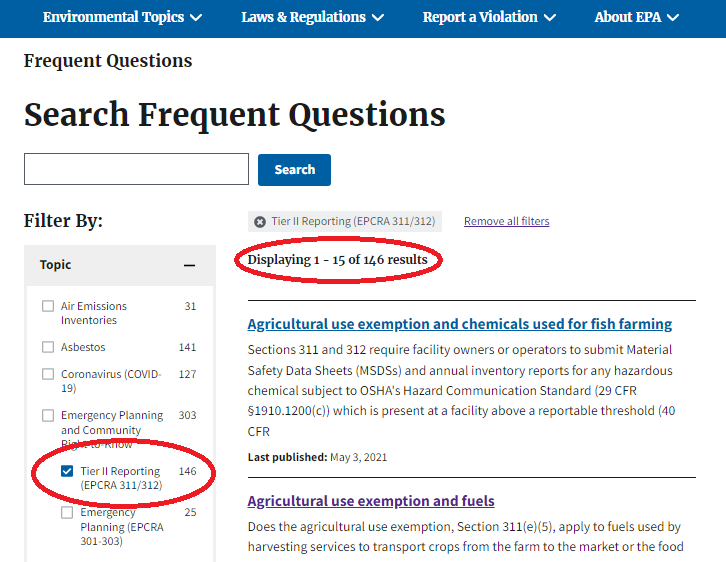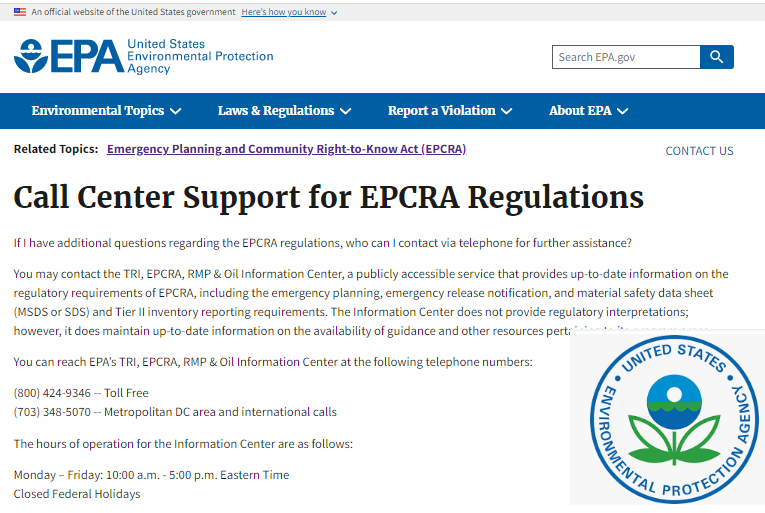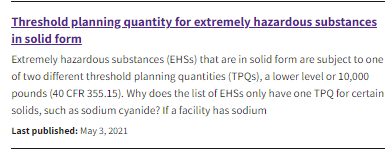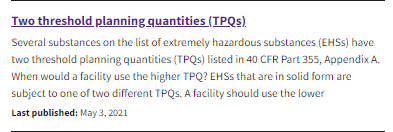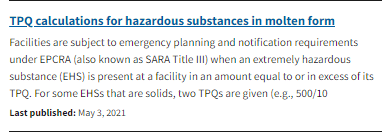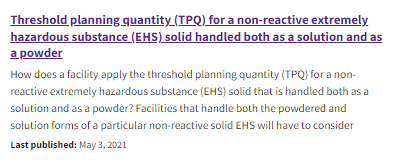16 Days: Non-reactive solids
“It is always a better system when if everything fails the wreckage reduces to an inert safe condition”
Atomic Accidents, by James Mahaffey, Chapter 6, 14:33 (Audible),
I highly recommend this book for every Environmental, Health and Safety professional (I stumbled upon this book). Life in the real world and how things actually go wrong. Spoiler alert: most incidents did not result in releases to the environment or injury. Read the last chapter for solutions that overcome many of the challenges of existing systems, appropriate as ESG and Climate Change proponents increasingly look to zero carbon emissions
Along those lines, non-reactive solids are recognized as presenting a lower risk than their reactive solid or non-solid chemical counterparts, and their contribution to thresholds can be reduced accordingly.
I’m referencing FAQ’s around this topic, so I’m leaving the first 2 FAQ items of my FAQ posts in this post as well, how to get into the Tier2 FAQ and the EPCRA SARA Hotline number.
Remember that to Filter for Tier II Reporting only:
you will first need to check Emergency Planning and Community Right to Know on the main page,
which will give you the option to check Tier II Reporting (EPCRA 311/312),
after which you will want to uncheck Emergency Planning and Community Right to Know
so that you see 146 FAQs instead of 303 (the balance of the 303 are unrelated to 311/312)
Another non-intuitive and annoying (to me) feature of the way the FAQ’s work is that if you search, the web page unfilters before searching, so you no longer see only Tier2 FAQs. When you go back, you are still unfiltered.
Be sure to include the term Tier II in your search if you don’t want to expand the search to other (unrelated for now) topics.
I’ve provided both a link to the main (filtered) Tier2 only FAQs, and have included the hyperlinks at the bottom of each FAQ that I highlighted. So you can click those and still be looking at the appropriately filtered FAQs in a separate window if you want.
Below is one of the most useful, where to call for help. In my experience, while you may experience some “on hold” time, the information when you get to a person will be excellent and cross referenced to the particular citations or other resources clarifying the question.
EPCRA SARA Hotline
And now for more FAQ
“Molten” and “in solution” Extremely Hazardous Substances EHSs need to be compared to the lower Threshold Planning Quantity TPQ for their CAS Number. This FAQ clarifies the amount by which that amount can be reduced, applying a multiplier of .3 to these EHS’s in molten form and .2 to these EHS’s in solution. It was interesting to see that these reduction factors were determined based on testing to determine the amount of the EHS that would be volatilized in the event of an incident.
This is a repeat of yesterday’s topic combined with today’s, and summarizes Reactive Solid and Non-Reactive Solid Threshold Planning Quantities TPQs
Remember that if your materials don’t require comparison to the Lower Threshold Planning Quantity TPQ, since they are Extremely Hazardous Substances you don’t get to use the Upper TPQ of 10,000 pounds (that’s only for Section 302 initial notification), the upper TPQ for Extremely Hazardous Substances for Tier2 is 500 pounds
Reiteration of why the .3 factor can be applied to molten materials.
Not surprisingly, calculate each component separately then add them up and compare to the Lower Threshold Planning Quantity.
Hope that covers your questions about Non-Reactive Solids.
More tomorrow, here’s to March 2nd!
Community outreach: What other FAQs have you found useful (or just interesting)?
#SARA312 #SARATierII #SARATier2 #EPCRA #EGLE #March1EPAReportDeadline #ThresholdDeterminations #ExtremelyHazardousSubstances #EHS #ThresholdPlanningQuanitity #TPQ #EPAFAQ #CERCLAFAQ #SARAFAQ #EHSThresholdDeterminations #SARATier2FAQ #Non-ReactiveSolids #NonReactiveSolids #molten #InSolution #Powder #ParticleSizeLessThan100Microns #ReducedContributionToThresholds
Michigan Environment, Great Lakes, and Energy EGLE links from all three 2022 SARA 312 virtual training course webinars:
I’m reposting these links with my daily Tier2 post because they are so useful.
You can sign in and watch/listen even if you didn’t sign up for the webinar series.
RECORDING LINK FOR SESSION 2: Wed Jan 19, 2022.
Really good example on batteries. This is the “in the weeds” how to conduct your threshold determinations episode: https://attendee.gotowebinar.com/recording/4027906237723673347
I talked to Mike Young, one of the presenters, right after the first webinar. He said that it’s not unusual for them to take phone calls from people from other states (with the warning to confirm that your state doesn’t have differences in their requirements compared to Michigan).
RECORDING LINK FOR SESSION 1:
https://attendee.gotowebinar.com/recording/7957790593170499843
Michigan uses Tier2 Manager for report submission, which is a Michigan-specific program. If your state uses different software, you will need to review its specific requirements.
RECORDING LINK FOR SESSION 3:
https://attendee.gotowebinar.com/recording/2763075340284995085
If your state uses a different software program there may be some differences, but this webinar will probably also cover how to determine the Hazard Ratings, how to enter Locations, and other details associated with report submission. I’ll post the replay when it becomes available.
PRESENTATION: (I wasn’t able to attach a copy of the presentation, email the link below and they will send it to you)
SARA TITLE III – TIER II REPORTING WEBSITE: http://www.michigan.gov/sara
MICHIGAN FACILITIES’ GUIDE TO SARA TITLE III: https://www.michigan.gov/documents/deq/deq-oea-saraguidebook_509720_7.pdf
CONTACT INFORMATION:
Mike Young and Adam Pohl
517-284-7272

